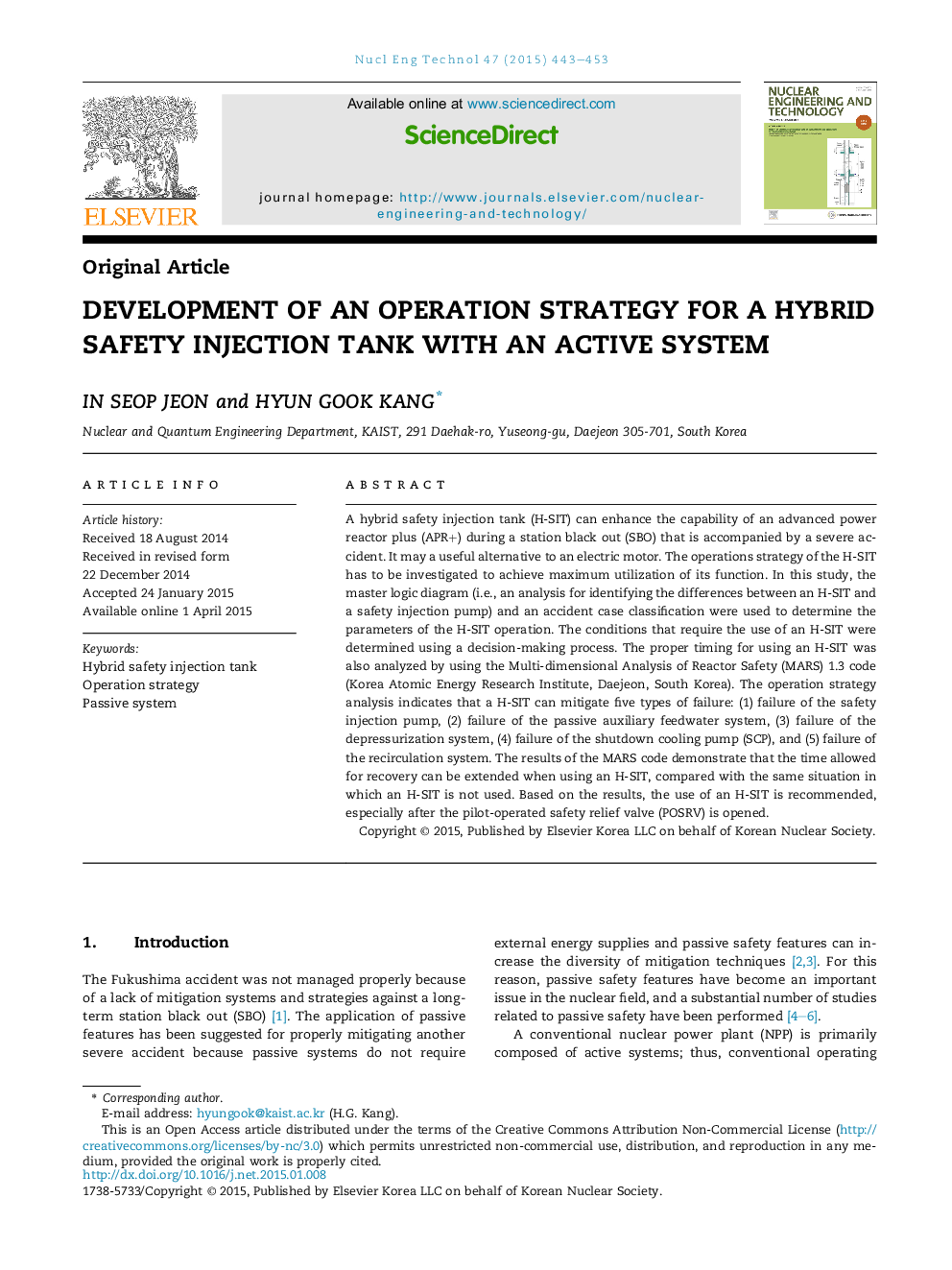| Article ID | Journal | Published Year | Pages | File Type |
|---|---|---|---|---|
| 1740148 | Nuclear Engineering and Technology | 2015 | 11 Pages |
Abstract
A hybrid safety injection tank (H-SIT) can enhance the capability of an advanced power reactor plus (APR+) during a station black out (SBO) that is accompanied by a severe accident. It may a useful alternative to an electric motor. The operations strategy of the H-SIT has to be investigated to achieve maximum utilization of its function. In this study, the master logic diagram (i.e., an analysis for identifying the differences between an H-SIT and a safety injection pump) and an accident case classification were used to determine the parameters of the H-SIT operation. The conditions that require the use of an H-SIT were determined using a decision-making process. The proper timing for using an H-SIT was also analyzed by using the Multi-dimensional Analysis of Reactor Safety (MARS) 1.3 code (Korea Atomic Energy Research Institute, Daejeon, South Korea). The operation strategy analysis indicates that a H-SIT can mitigate five types of failure: (1) failure of the safety injection pump, (2) failure of the passive auxiliary feedwater system, (3) failure of the depressurization system, (4) failure of the shutdown cooling pump (SCP), and (5) failure of the recirculation system. The results of the MARS code demonstrate that the time allowed for recovery can be extended when using an H-SIT, compared with the same situation in which an H-SIT is not used. Based on the results, the use of an H-SIT is recommended, especially after the pilot-operated safety relief valve (POSRV) is opened.
Keywords
Related Topics
Physical Sciences and Engineering
Energy
Nuclear Energy and Engineering
Authors
In Seop Jeon, Hyun Gook Kang,
